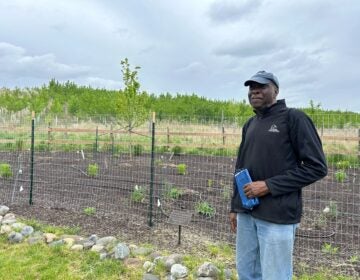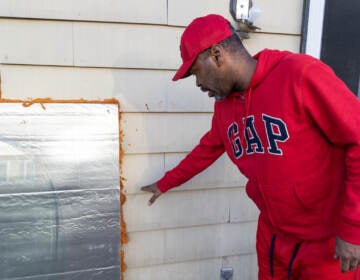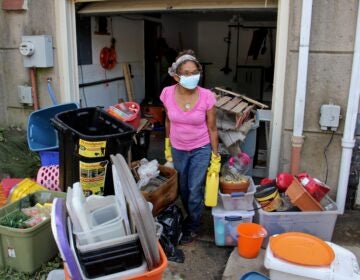Isaias emergency: Eastwick residents call for city, state aid after ‘devastating’ flooding
The low-lying community built alongside a toxic landfill has dealt with floods for decades and residents are used to fighting for protection.
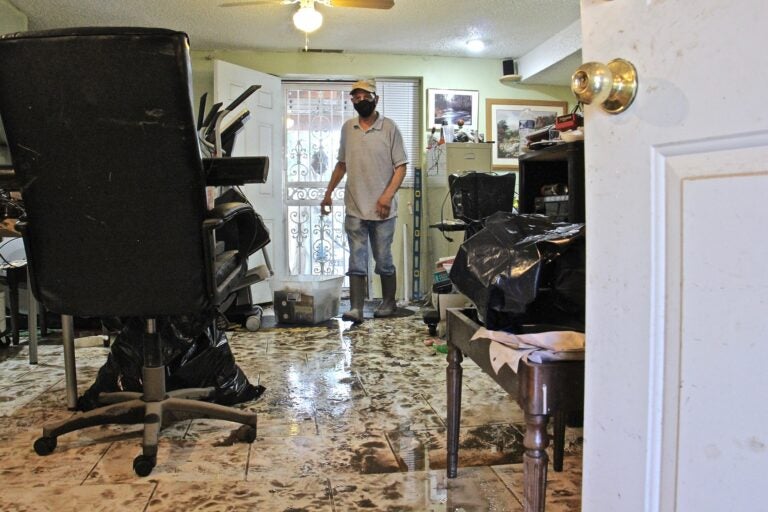
File photo: Flood water from Darby Creek rose to nearly four feet inside Leo Brundage's Eastwick home after Tropical Storm Isaias struck. (Emma Lee/WHYY)
Residents placed their unwanted belongings on the side of Saturn Place in Eastwick for trash collection. The bottoms of cars were laced with dirt and the ground had spots of wet mud. It was a scene neighborhood residents knew far too well.
Another storm, this one named Isaias, sent upwards of four feet of water into the neighborhood on the edge of Philadelphia.
“It was devastating,” said Ernest Scott, Jr. of Southwest Philadelphia. He drove down that morning to help his father Ernest Scott, Sr., 80, who lives in a cul-de-sac, next to a field that extends to Cobbs Creek, which acts as a border between the city and Darby.
“I got here yesterday, 7:30, [I] looked, the whole field was flooded with water,” he said. Soon it reached the neighborhood. “The side of this park looked like [Schuylkill River Falls].”
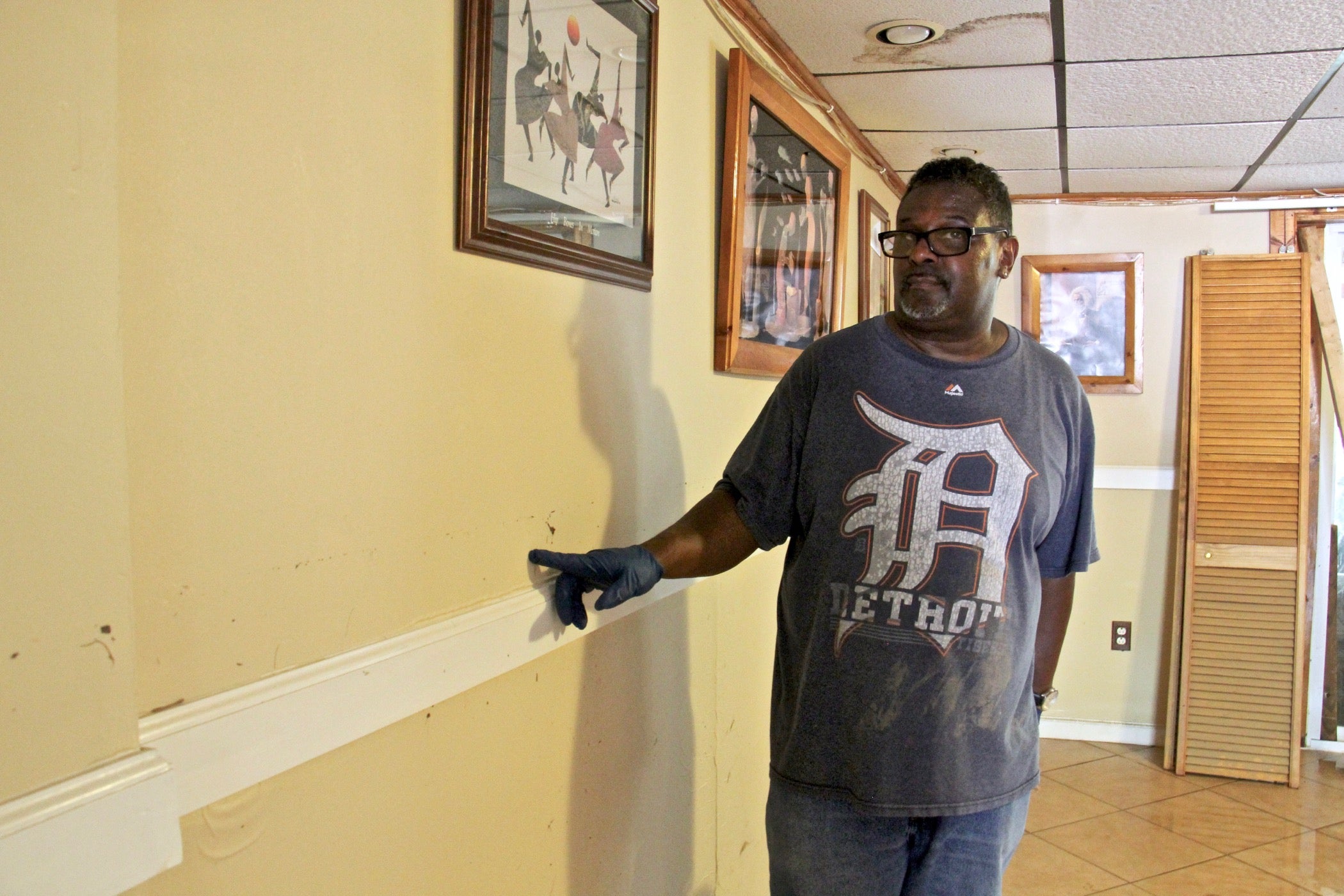
Eastwick has dealt with floods for decades. The area occupies the lowest point in the city and water surrounds homes and businesses — Darby and Cobbs creeks to the west, wetlands to the south, and the Schuylkill River and Mingo Creek to the east.
Ernest Scott’s Saturn Place home sits in a community next to a field where grass grows over a toxic landfill, bordered by Cobbs Creek. Michael Nairn is a professor of Urban Studies at the University of Pennsylvania. He and a team of researchers have studied the area for eight years, and found the former landfill constricts the flow of Cobbs and Darby creeks, which leads to overflow during big storms like Isaias.
The Philadelphia Housing Development Corporation is working on a plan to redevelop close to 200 acres of public land in the area with flood mitigation as one of its primary goals.
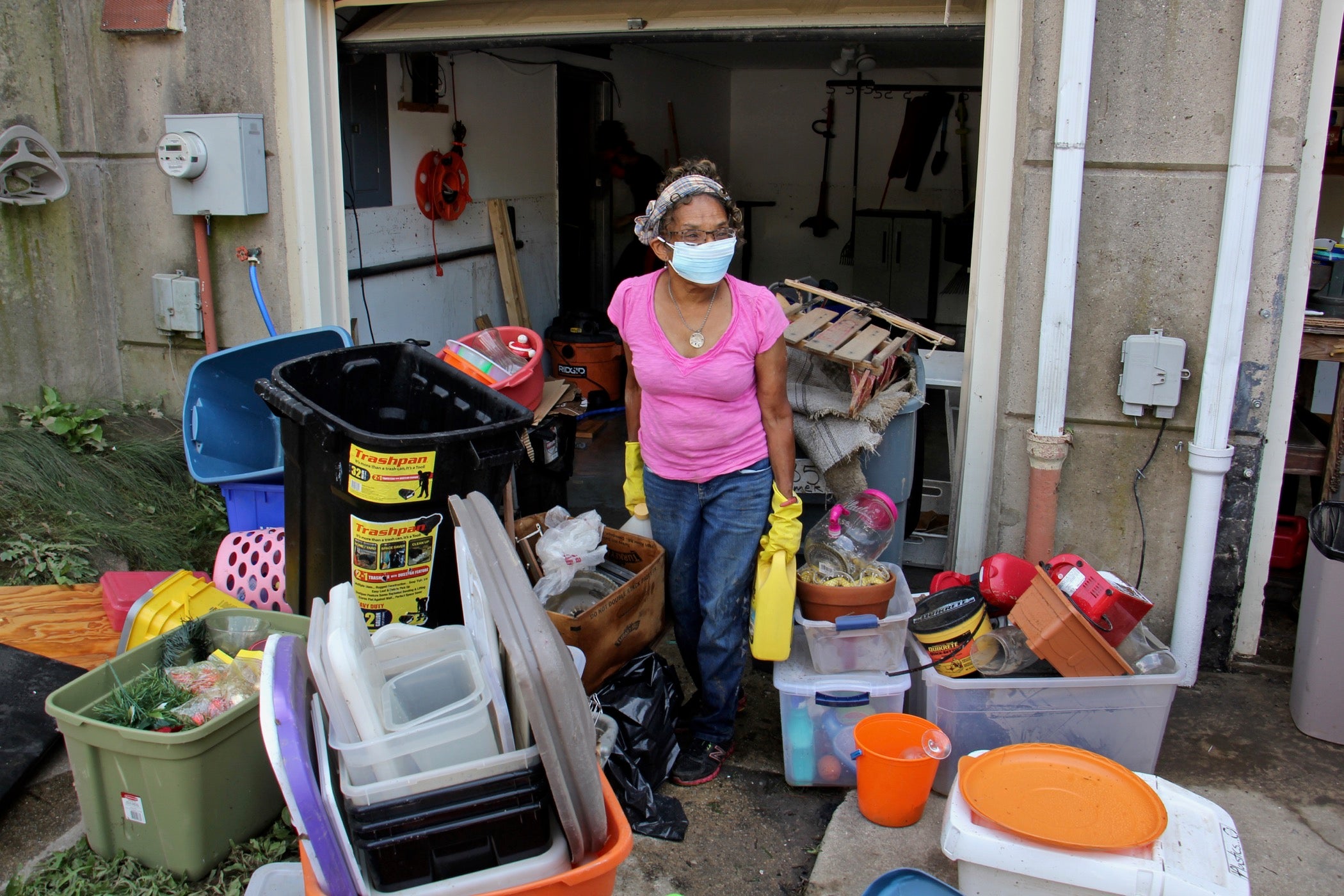
“The City is committed to finding ways to reduce flooding in Eastwick through green stormwater infrastructure built on this publicly owned land,” said Greg Heller, senior vice president of community investment for PHDC, in a statement posted to the corporation’s website. He is also the executive director of the Philadelphia Redevelopment Authority,
“The Land Strategy recommends that 67% of the publicly-owned land in Eastwick be permanently dedicated to green infrastructure, stormwater mitigation, and community open space. We are in the process of implementing that plan.”
Community leader Pastor Darien Thomas said he was hopeful about the plan, but immediate relief is needed for residents. The state, he said, needs to bring emergency attention to Eastwick to curb adverse health impacts that may occur in the aftermath, especially during a pandemic.
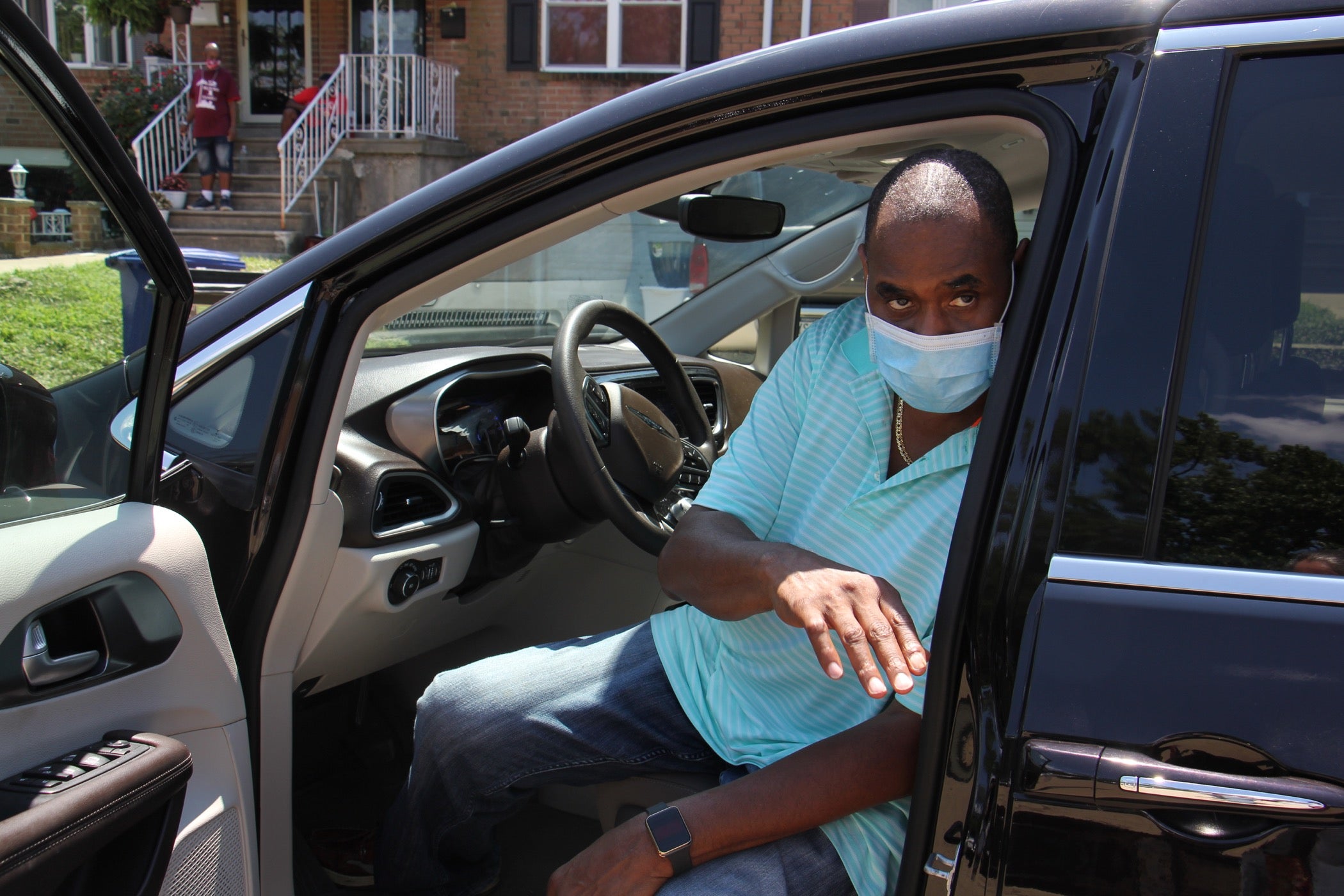
“If you don’t look at it as a state of emergency then what’s going to happen is people are going to get sick,” Thomas said.
City Councilmember Kenyatta Johnson tentatively scheduled a virtual town hall on August 17 at 6 p.m. with elected officials, and government and relief agencies to discuss recovery efforts. Johnson said he plans to donate cleaning products.
“It’s a tough situation because obviously [there’s] the backdrop of COVID-19,”Johnson said. “So this is another added level of stress the Eastwick residents have to deal with. We want to be with them all throughout them going through this transition and putting their lives back together.”
State Senator Anthony Williams and U.S. Rep. Mary Gay Scanlon visited the residents of Saturn Place Wednesday. Surrounded by community members who appeared frustrated, Williams struggled to address their concerns.
Williams later empathized with residents and said he and Scanlon would work to bring state and federal aid “to help clean up the area and restore property.” The Pennsylvania senator said he would work to identify funds to improve the area’s inadequate drainage system.
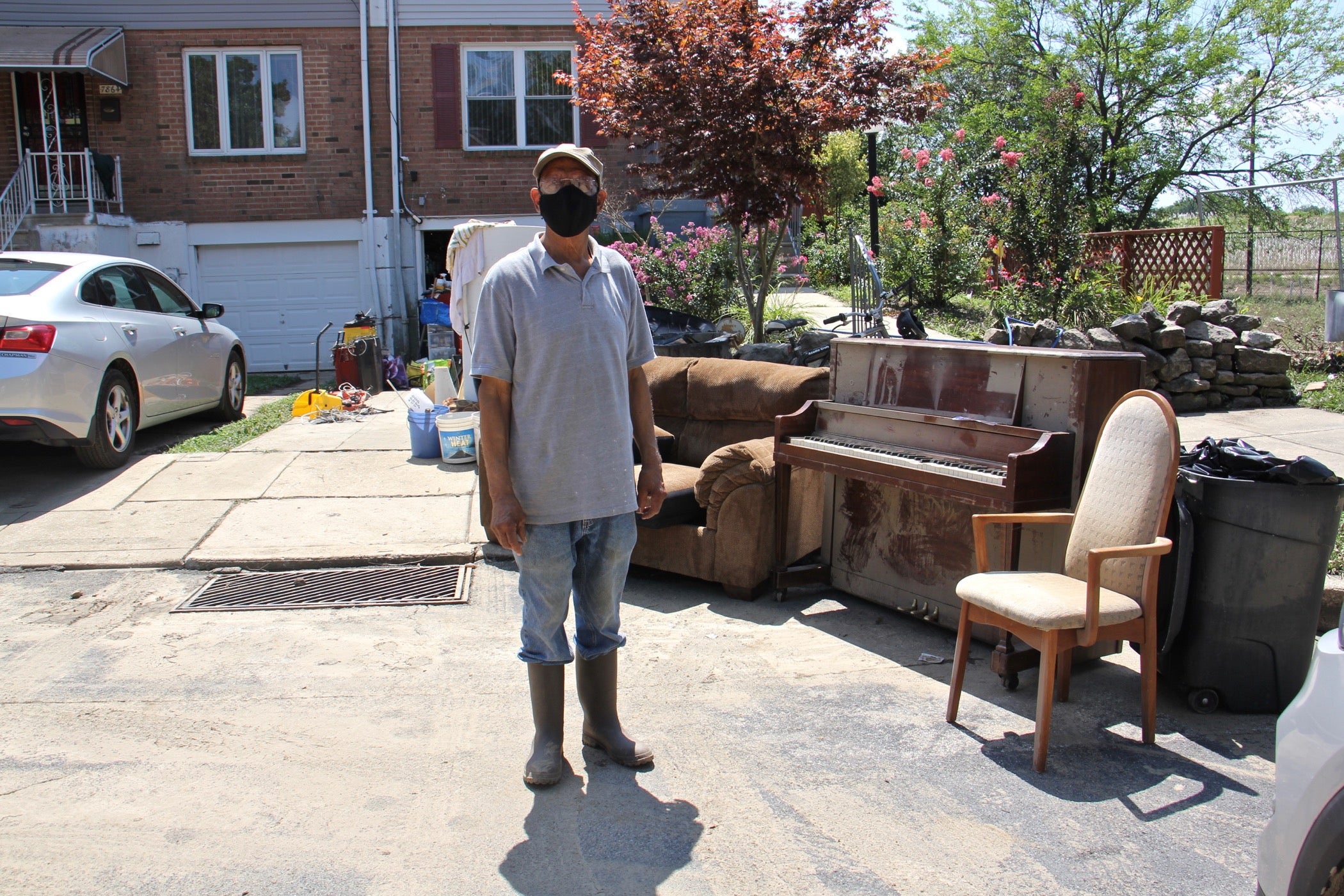
Leo Brundage lives a few doors down from Scott, Sr., right next to the field. The 76-year-old has lived in his home for more than 30 years, and experienced flooding more than 10 times. The recent flood brought him $25,000 to $30,000 worth of damage, he said.
While the constant and costly inconvenience may drive some away from the area, Brundage has involved himself in the effort to stop the flooding.
“I’m looking for the day when I don’t have to worry about the flood,” he said.

Subscribe to PlanPhilly
WHYY is your source for fact-based, in-depth journalism and information. As a nonprofit organization, we rely on financial support from readers like you. Please give today.




